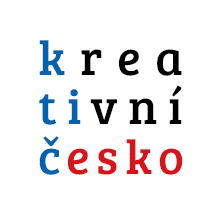About Us
The Creative Czech website and platform are managed by the Theatre Institute (IDU).
Through its work, the Theatre Institute contributes to the development and enhancement of the social prestige of art. IDU supports the exchange of information and experience between artistic disciplines, provides information and advisory services, is engaged in educational activities, and presents and promotes Czech art abroad.
The Theatre Institute is a state-subsidized organization established by the Ministry of Culture of the Czech Republic.
Mapping Czech Cultural and Creative Industries
Here we summarises the results and experiences gained during our five-year research project entitled Mapping the CCI in the Czech Republic (2011–2015). We established cooperation with a number of institutions, and municipal representatives or experts. We can provide information about various studies, methodologies, and specific projects.

-
Prague
Prague
125 000 people employed in the CCI
-
Pilsen
Pilsen
CZK 4.1 billion in annual returns
-
Brno
Brno
11,8 % of labour force
-
Pardubice
Pardubice
5,4 % of total employent in CCI
-
Uherské Hradiště region
Uherske Hradiste region
1651 entities in the CCI

Brno
377 028 inhabitants
11 000 entities active in the cultural and creative industries
20 779 employed individuals
11,8 % of Brno’s labour force
87 % of the involved subjects indicated that they work together with subjects from other cultural and creative industries

Zlín

The independent Creative Zlín Working Group was established in 2014. In January 2016, it was transformed into the first cluster in the Czech Republic specialising in the creative industries – the Zlín Creative Cluster.
March 2016 saw the official opening of the new Centre for the Creative Industries (UPPER), which provides a start-up space to entrepreneurial creative designers. Not only does it provide a suitable environment and equipment under reasonable conditions, but it also offers consultancy and mentoring for entrepreneurial activities. This ‘incubator’ is used by students and recent graduates, primarily from the local Tomáš Baťa University. The main focus is on projects of a design, audio-visual, architectural, or marketing nature. It leads to networking, helps to start up functioning companies and facilitates knowledge exchange; helps individual projects get on the market; and leads to the transformation of enterprising individuals
into a company.
Plzeň
The heart of DEPO2015 is the Centre for Creative Enterprise, which manages makerspace and a creative incubator. The aim of the Centre is to interlink culture with business and the creative industries. It has been established for designers, game developers, graphic artists, craftspeople, architects, and other professions, where the mapping process helped
to attain this objective.
The concept of Makerspace is based on the fab labs that exist abroad. The workshop offers space for creating, experimenting, and producing. It also offers public courses in addition to membership, which allows both hobbyists as well as professionals to share a wide range of professional equipment at a lower cost. Local experts provide advice regarding prototyping, and will even produce small series orders.

Olomouc

100 154 inhabitants
1211 entities in the cultural and creative industries
5175 people employed in the cultural and creative industries
The process of mapping finished in 2016 and in April 2017 the final report was published. The study confirms the traditional status of the city as a centre of scholarship. The most significant cultural sectors in Olomouc are literature and print, followed by development and software, visual arts, and music. Cultural heritage has a particular significance due to the fact that the city and its surroundings are considered to be one of the most historically interesting regions in the Czech Republic.
Pardubice
89 693 inhabitants
672 entities in the cultural and creative industries
2224 people employed in the cultural and creative industries
5,4 % of total employment in Pardubice
CZK 1.7 billion Kč in annual returns
Neither the results from the strategy nor, unfortunately, from the original document Cultural and Creative Industries in Pardubice are regularly monitored, and therefore there is no comprehensive view of how the situation in the cultural and creative industries is developing. In 2016, the
City Hall’s Department of Education, Culture and Sport started intensively working on preparing a strategic document for culture with the aim of
resubmitting it to the City Council. The results of an investigation have shown 25% of the proposed measures started to be implemented even without a valid strategy.

Praha

1 267 500 inhabitants
37 000 entities in the cultural and creative industries
125 000 people employed in the cultural and creative industries
14 % of Prague’s labour force
The City of Prague and various independent municipal initiatives were not actively involved in the Arts Institute’s Mapping Project in the same way
as other cities. Nevertheless, over the course of the project mutual links and communication were established. Creative Prague is a project undertaken by the Prague Institute of Planning and Development, with the aim of supporting the conceptual development of the cultural environment in Prague. It is based on the fact that no matter how long Prague has been profiling itself as a cultural metropolis, supporting living culture and creativity is not on the list of the city’s priorities. To date Prague has not successfully developed its creative potential in a way that matches what the city has to offer or its needs.
Uherské Hradiště
25 287 inhabitants
1651 entities in the cultural and creative industries, broken down as follows:
479 entities active in crafts and trades
410 entities active in architecture
325 entities active in the field of literature
47 % of the people involved in crafts and trades are furniture makers or woodworkers
Uherské Hradiště is an exceptional region as far as the entire Czech Republic is concerned because of its ongoing relationship with traditional folk culture, crafts, and trades. The strongest aspect is a love for crafts and trades and the know-how that, because of neglected training and support
for a new generation of craftsmen, is rapidly disappearing. For example, there is a definite lack of a distribution network and the strategic promotion of craftsmen on the part of the city and the region. Now the city is starting to work in cooperation with the region and, after the evaluation of the mapping document, is starting to define a strategy and specific supporting activities.


